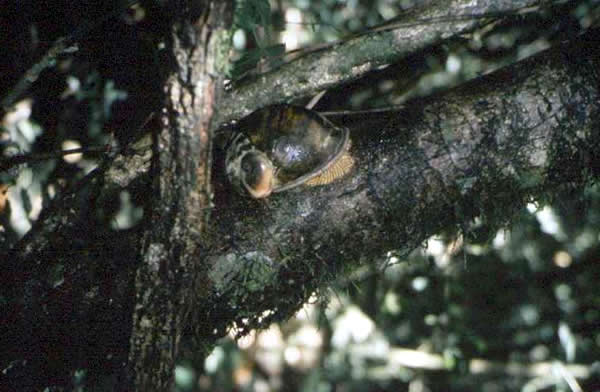
Fig 6-1 Helicophanta souverbiana audiberti in tree.
The three major threats to Madagascar land snails survival are habitat destruction, introduced species, and collecting.
This is undoubtedly the main treat to the Madagascan fauna. The humidity of the rain forest is a favorite snail habitat. Cutting the forest destroys their home and habitat but also exposes the snails to the danger of desiccation. The solution to slash and burn is human population control.
Another threat to terrestrial species is the introduction, accidental or intentional, of alien species. One such intentional introduction is the carnivorous snail Euglandina rosea from Florida to control the Giant African Snail Achatina fulica. The effect on Achatina has been slight because E. rosea prefers to feed on smaller native snails. In Madagascar, A. fulica is a serious pest, especially in the East Coast vanilla plantations and in the Sambirano region where it attacks cocoa trees. Although regarded as a delicacy in many countries, it is apparently not eaten by the local people in Madagascar. Attempts at biological control by introduced carnivorous snails were tried on a number of occasions:
1. Euglandina rosea
2. Gonaxis quadrilateralis and G. kibweziensis
3. Edentulina ovoidea ..... [Jenkins 1987, pg 82-83]
These controls were ineffective because the predator found the small native species tasted better than the prey.
There is another aspect of man and the environment. The introduction of alien species whose habits and fertility are completely foreign to the new community and without its parasites or predators, may have rather profound and adverse effects on the organization of the community itself and nearly every organism in it. The immigrant snails living in a community without its previous biological controls can have a population explosion which may not only out-compete the native snails and other herbivores for food but also destroy the vegetation essential for many organisms for shelter. Consequently, the reduction in number of the native herbivores will results in the reduction or extinction of many carnivorous species. This, in turn, may then affect other members of the community, either by removing a check in their increase or depriving them of a livelihood. This unbalanced environmental condition can cause many beneficial animals and plants to disappear permanently from the area. Introducing alien species is like opening Pandora’s Box.
Land snails are known locally as 'Akora', and are usually not collected by the Malagasy. Many species, however, have extremely attractive shells and could become involved in the shell trade. It should be recommended that firm measures should be taken to ensure that commercial collecting does not start. Since many of these have apparently extremely limited distributions and are still very poorly known to science, collecting should currently be limited to specimens for scientific purposes.
Almost nothing is known of the ecology of Madagascan land snails. There is an urgent need to determine this before making recommendations for their conservation.
Since most of the taxonomic work was accomplished from collections of empty shells, there is a need to examine live and preserved specimens for verification and clarification of some of the taxonomic problems.
There are many reserves which need to have an inventory of their land snail fauna.
Why is there a lack of tree snails in Madagascar? I would have expected some in the tropical rainforest.
The Madagascar fauna is unicolor or with dull patterns. Why are there no bright colored shells?
The depressed Helicophanta forage on the ground and then rest for a week or so at a height of three meters in a tree or shrub. It is startling to see a large snail crawling on the thin stem of a plant. Why do they ascend trees to rest? Why not conserve energy and rest on the ground?

The family Achatinidae is native to Africa and the Mauritius. Why are there no Achatinidae in Madagascar when it is found to the west in Africa and the east in Mauritius? Was it originally present but has been replaced by another family?
Look beyond the shell and notice the color pattern of the animal. Now that you have learned how to identify snails, you may wonder what you can contribute to the snails’ world. A land snail specimen has many facets - historical, zoological, zoographical, and ecologic. Who first discovered the species? Why, where, and when? Who first described it? How did he receive the specimen and when? Where does the animal live? What does it eat? What is its protection from enemies and desiccation? How does it relate to its neighbors and environment? Who are its relatives and how are they related? The study of local land snails has just begun. Although the species of Ranomafana National Park are been identified, little is known about their life history. To fill this gap it is my wish that amateurs make observations that will be of value and interest to science. Below is a rough outline of some of the subjects that need attention:
1 - In what kind of habitat does a species occur (beach, scrub, forest, gardens, grassland)?
2 - Is the species found in the soil, on the soil, or in vegetation?
3 - Is the species found singularly in pairs or in groups?
4 - With what species does it occur and in what numbers? Are there predators species present?
5 - Is it found under or near particular plants?
6 - What is its daily cycle? Does it spend the daylight hours in the same or in a restricted location? Does it move in a regular pattern?
7 - Is there an annual cycle?
8 - Describe its feeding habits. What does it eat? Is the food living or dead? Is it carnivorous?
9 - Look for its eggs and/or young. How many eggs are there? Are the young a small duplicate of the adult?
The most important advice for the snail watcher is look!

Fig 6-20 Don't forget to look!